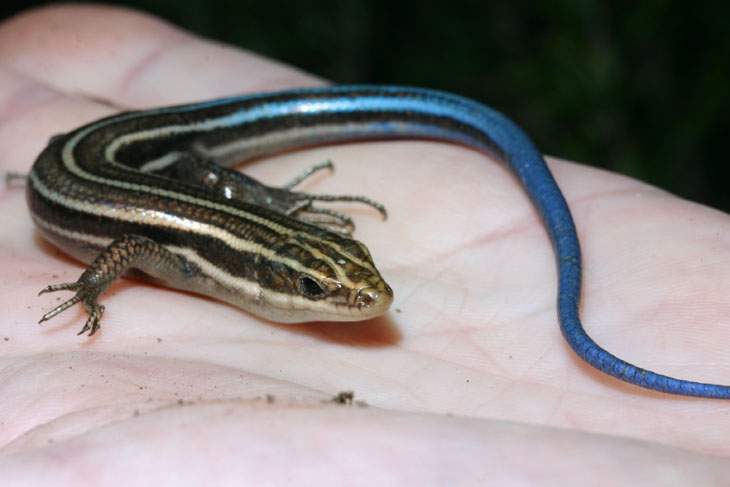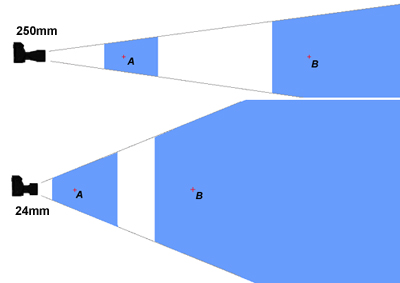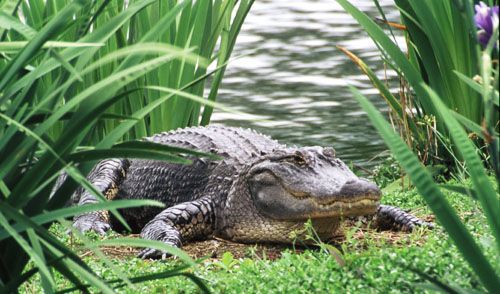Not too long ago, I picked up a book that I’d had, not exactly in my childhood, but in my earlier adulthood (which may yet be my childhood, at least if you ask some people, including me.) Tortured sentences aside, I’m finding it quite interesting to note how differently I react to the content now, two decades after my first read-through.
The book is called Mysteries of the Unexplained, probably one of several bearing that title – this one is published by Reader’s Digest Association. Essentially it’s a collection of curious stories, mostly quite brief, about various accounts, encounters, and experiences ranging from coincidences to religious revelation, UFO sightings to frogs in a block of coal. And as might be imagined, it’s not a small book.
The biggest problem with books of this type is that they rely solely on the story. “Here’s what someone said,” they declare, but at no point is there any effort to examine such accounts closely, critically, or to even attempt to verify that it really was said. Sources of information are actually listed after every account (Reader’s Digest has always relied on at least 50% recycled content,) and this perhaps implies that some effort was made to produce stories with a degree of accuracy – “Look, this information has been printed elsewhere!” From a critical thinking standpoint, however, this is pretty much meaningless, since there is nothing that demonstrates that their sources made any effort to examine or verify the accounts, and if said source embellished it (or simply made it up,) then the flaw is repeated and compounded. Wikipedia has run into this problem more than once, in seeking print citations for its pending (yet still published) material, only to find that the cite they proudly list had used their own entry as a source – in other words, the entry was verified by referring to itself. This is a proud tactic of religions everywhere, but that’s another story…
So what we end up with is a book that is better than 90% anecdotal, and to an unknown degree not even confirmed anecdotes. People put an amazing store in anecdotes, especially when they appear in print, but a moment’s thought reveals the fatal flaw in such things. My neighbor may tell me that he jumped his minibike over the family car when he was ten years old. Should I believe him? Ah, but if the same account is printed in a book by a ‘journalist,’ what then? The implication is that this is somehow better, and now a confirmed experience from his youth – but nothing’s changed. Perhaps we think that, because someone else decided it was important enough to repeat, then they must consider it more trustworthy than the same old bullshit we hear every day, but that’s not how most ‘journalists’ actually work, and far too many hide behind the idea that they’re simply reporting what someone said. Most of the content of this book, and millions more like it, is exactly of this nature.
Should we be fair, and say that simply repeating some info is not evidence of any particular guilt or agenda, and what the reader takes from it is their own responsibility? Perhaps, if it weren’t for the specific approach taken in numerous portions (and again, it is very easy to see this elsewhere too.) For instance, in the preface of the section titled, ‘Monsters,’ we have this statement (p 138):
The skeptic who feels inclined to say, “Yes, but – ” after reading these reports should note that hundreds of sightings have been omitted for each one included and that many viewers are converted scoffers.
Ah, so, because hundreds were omitted, what’s left should instill confidence? Well, no, because we have no idea what criteria, if any, was being used in selection – they could have picked at random, or selected those with no chance of follow-up, or just those that sounded cool. And the second part of that sentence is merely an appeal to mob thinking, in essence implying that you’re stupid because others think differently. What this really means, however, is that the editors have no idea what skepticism really entails.
Immediately following, we have an account from 1734 of a sea serpent spotted by a Norwegian missionary. The caption under the illustrating painting begins with:
Missionary Hans Egede, a person of unquestioned integrity…
Well, this is plainly not true, because I question his integrity (and I’m appalled that they never checked.) Even more, I’m not inclined to fall for the misleading choice of words. First off, a missionary isn’t really anything special; it’s simply a person who decided to proselytize, and requires no particular certification, training, or background checks. Second, even if Egede were an ordained archbishop, this really doesn’t mean that he was free from prevarication – in fact, there is more than a little support for the idea that he would be much more accomplished at it than the average person, and even inclined to trade on his ‘integrity.’ But ignoring what history has told us time and again, there’s the simple matter that integrity usually refers to someone’s ethical standpoint, and has absolutely nothing to say about their ability to be mistaken, or unconsciously biased, or simply a poor observer. Someone can be perfectly honest about what they think they saw, but still mistaken in their interpretation of it, and this is a very fundamental facet of eyewitness accounts. Wrong does not have to imply anything at all about the person’s personality.
There’s another matter with books of this nature, demonstrated by the painting that illustrates the entry. A green serpentine creature twists in and out of the water, it’s crocodilian head raised high to spout water like a fountain. Odds are that the artist was not guided by anything more than the brief written account below, if indeed the painting was originally intended to illustrate it (I’ll give them the benefit of the doubt, at least from the inclusion of the ship and water fountain.) The direct quote from integrity-riddled Egede says:
appeared a very terrible sea-animal, which raised itself so high above the water, that its head reached above our maintop. It had a long, sharp snout, and blew like a whale, had broad, large flappers, and the body was, as it were, covered with a hard skin, and it was very wrinkled and uneven on its skin; moreover on the lower part it was formed like a snake, and when it went under water again, it cast itself backwards, and in doing so it raised its tail above the water, a whole ship length from its body. That evening we had very bad weather.
I love the part about the weather, which seems to imply that these were related in some way – after all, the chances of a ship running into bad weather are infinitesimal…
But note that, taken without the illustration, there isn’t a lot which supports the ‘serpent’ idea anyway, save for the single mention of the lower part formed like a snake. Does this mean the back half of the body, which presumably would still have been in the water, or simply the underside of the visible portion? Everything else, with remarkable accuracy, fits with a whale breaching, and it would not be hard to imagine the grooved underside of a humpback whale, known especially for breaching behavior that fits this description perfectly, to be considered reminiscent of a snake, especially if you’re not a close student of snakes. Further questioning of Egede to clarify his account is, of course, impossible, and one would have to refer to the book cited as the source (Mermaids and Mastodons by Richard Carrington) to see just what source that used. It is not unheard of that someone in search of a good story, especially when writing an entire book about a subject, would purposefully edit or fudge the account in order to make it sound more interesting.
This book, in fact, also brings up the Bermuda Triangle, a ‘phenomenon’ of blatant manipulation that was effectively exposed as a fraud. It’s very hard to treat any book as a serious effort when even rudimentary research reveals more hype than substance.
[I know this is beginning to sound like a book review, but my point is, many, many examples of this kind of behavior can be found – this is simply the one I have at hand to speak of directly, rather than in an abstract manner.]
The section on UFOs also demonstrates more questionable content. Herein can also be found illustrations that poorly match the accounts, leading readers to infer that things were somehow different from the only quoted source – in one case, the sketch made by the witness (Carlos Antonio De los Santos Montiel from May 3, 1975 over Mexico City, p 224) does not match his own account with any degree of accuracy. And on the following page, we have three examples of UFO photos, two computer-enhanced, that illustrate absolutely nothing. No one could possibly look at any of them and even think these are objects, much less gather that they’re supposed to be craft of some kind, and no details of any sort can be discerned from the images, so as supporting evidence they mean nothing.
More weasel words can be found. On the subject of physical evidence, we have, from page 164:
Droppings found near the [Yeti-like] prints were gathered to be taken back to England for analysis.
and from page 173:
The negative was checked for evidence of fakery by the Burns Detective Agency, and the circumstances in which it had been taken were attested to by the Watertown’s captain and assistant engineer.
Notice, however, that no mention is made of what was found in either case. The statements are therefore meaningless, but because they are mentioned in a significant way, we are to assume that this says something pertinent, and it’s really not hard to find someone who will fill in the blanks. And even if, for instance, the photo analysis pronounced them ‘genuine,’ this doesn’t say what is obviously implied. Most photographic tricks, such as double-exposures, masking, and the like, do not physically alter the negative in any way, so the image is still genuine, but genuinely of what? The most famous example is probably the Cottingley Fairies (credit to the book for not including this hoary one,) where the images were pronounced legitimate by ‘photo experts,’ and indeed were actual, bona fide, untouched and unedited photos… of paper cutouts. The experts (vague terms like this abound) were not ruling on the content, only on the medium.
By the way, every time I see Frances in that photo surrounded by fairies, I wonder why she’s wearing a flight helmet…
Fairly frequently, we also get to see statements similar to the second part of the last quote; a witness provides “sworn testimony” or some official-sounding report. Now, it would seem, we have the power of the courts to contend with, and grave consequences and all that – but, consequences of what? There aren’t actually any laws against lying, only against taking advantage of someone by doing so – fraud, misrepresentation, and so on. And even those require the ability to establish intentional deceit, and an aggrieved party to file charges. In fact, topics such as UFOs are ideal for fraudsters, because even on the odd chance someone is proven to be lying, the fans desperate for evidence of extraterrestrial life will bend over backwards to find ways to deny that it’s a lie. But even without that, in singular witness accounts, who could possibly prove that nothing was actually seen? Not to mention that someone who is honestly mistaken about what they saw is not legally liable in any way.
The overall point is, publications of this nature rely on countless forms of manipulation, inferences, and assumptions on the part of the reader, while providing almost nothing in the way of useful information. Every last personal account can, very easily, be just a story, and if that’s the primary content, it becomes impossible to say that there’s any value to be had from them at all. Now, many people, on hearing such a comment, immediately maintain that chances are at least some of them are legitimate (for whatever meaning of the word anyone wants to use,) if only on the basis of ‘odds’ or the thought that “this many people can’t all be lying!” But notice that the problems with all of this have never been restricted to lying, and such a statistical stance has (admittedly minimal) merit only if the reports represent a random cross-section of personal accounts. If, however, they were selected solely for how far they depart from normal expectations, then yes, the odds become demonstrably weighted towards the tall tale category. Let’s not forget that most books are aimed at sales, and providing a random selection of accounts is guaranteed to be more boring than selecting the sensational.
But even if we could somehow confidently say that at least 10% of them are accurate (again, meaning counts here,) then which 10%? To avoid just resorting to a crapshoot, some other criteria must be used to select accounts that provide verifiable information – criteria that really should be applied before such accounts are published in the first place, and most especially before any reader treats them as something more than pure fiction.
This is exactly where skepticism pisses off so many people, because where this leads is simply shrugging over all such accounts and then ignoring them. If there’s no way to verify them and nothing to be added, it’s Schrödinger’s Cat, forever sealed in a box and of unknown status. The clash between skeptics and ‘believers’ [anyone who considers such claims to be evidence of something specific] comes only from differing levels of assumption – invariably, the believer inferring far more than the accounts provide.
From the believer’s side, this is never how the clash is presented, however. Instead, it becomes ‘automatic dismissal’ by the skeptic, and it’s not hard to find actual examples of, “you don’t believe anything!” In fact, it can even become accusations that skeptics are paid disinformants, government or corporate stooges, and so on – desperate attempts to avoid the fact that such accounts are wide open to interpretation. Faced with the burden of proof or significance, many believers turn to denigrating every other viewpoint instead. Yes, this amounts to automatic dismissal, the same thing they often accuse skeptics of doing, and the irony is not lost on everyone.
It is always possible to read between the lines, but what’s between the lines is blank, able to be filled in at will. Sometimes, the real skill is reading only the words, and nothing else.





















































 Nice day out there, so it’s time to go see if there’s anything to be captured in mid-February, with the added incentive that it’s Charles Darwin’s birthday and I should illustrate natural selection. Hmmmm.
Nice day out there, so it’s time to go see if there’s anything to be captured in mid-February, with the added incentive that it’s Charles Darwin’s birthday and I should illustrate natural selection. Hmmmm. Last spring while preparing the mulch pile for use in the garden, I spotted a small sapling that had erupted from the rich soil, and in removing it I found it was actually an almond tree (Prunus amygdalus.) I have no idea when we tossed out an almond – they’re popular enough around the house that they get eaten quickly, unless they’re in questionable condition – but I tried transplanting it into the yard anyway. This isn’t really the climate for almonds, so I wasn’t expecting much, but what the hey. It grew about three times its height over the summer, never really appearing to thrive, and in the fall some visiting deer stripped all of the leaves from it. Yet today there appear to be new buds, so we’ll have to see what happens. It’s already weathered several days of sub-freezing temperatures, a light snowfall, and a freezing rain storm, plus last summer’s heat wave, so it’s not likely to see worse. The biggest challenge might be that under ten centimeters of topsoil sits Carolina orange clay, and if almonds don’t like that kind of substrate it’s not going to get very big.
Last spring while preparing the mulch pile for use in the garden, I spotted a small sapling that had erupted from the rich soil, and in removing it I found it was actually an almond tree (Prunus amygdalus.) I have no idea when we tossed out an almond – they’re popular enough around the house that they get eaten quickly, unless they’re in questionable condition – but I tried transplanting it into the yard anyway. This isn’t really the climate for almonds, so I wasn’t expecting much, but what the hey. It grew about three times its height over the summer, never really appearing to thrive, and in the fall some visiting deer stripped all of the leaves from it. Yet today there appear to be new buds, so we’ll have to see what happens. It’s already weathered several days of sub-freezing temperatures, a light snowfall, and a freezing rain storm, plus last summer’s heat wave, so it’s not likely to see worse. The biggest challenge might be that under ten centimeters of topsoil sits Carolina orange clay, and if almonds don’t like that kind of substrate it’s not going to get very big. I was surprised to see a caterpillar on the rosemary plant (Rosmarinus officinalis) – it was too big to have hatched this year, so it would have come through the winter. After a few pics, however, I nudged it to try and get it into a better position, and it simply collapsed and discharged a copious amount of brown goo. Ah. I guess it didn’t come through the winter after all. Whether a late hatching or an unlucky forager, my photo subject here failed to pupate in a reasonable time frame and probably got caught in one of the cold spells.
I was surprised to see a caterpillar on the rosemary plant (Rosmarinus officinalis) – it was too big to have hatched this year, so it would have come through the winter. After a few pics, however, I nudged it to try and get it into a better position, and it simply collapsed and discharged a copious amount of brown goo. Ah. I guess it didn’t come through the winter after all. Whether a late hatching or an unlucky forager, my photo subject here failed to pupate in a reasonable time frame and probably got caught in one of the cold spells.

 However, there are specific properties of focal lengths that can be exploited as well. The first of which is depth-of-field. DOF automatically becomes greater at shorter focal lengths, assisting in the pursuit of scenic images – and DOF also reduces for longer focal lengths. This means that it is easier to ‘isolate’ your subject by having it much sharper than the background if you use a longer focal length; the blurry background fails to grab the viewers attention and becomes inconsequential. But be aware that DOF is shorter the closer you focus, for any given focal length. In the illustration here, depth-of-field at f16 is indicated in blue for given focus points A and B, for a long focal length such as 250mm (top) and a short focal length such as 24mm (bottom).
However, there are specific properties of focal lengths that can be exploited as well. The first of which is depth-of-field. DOF automatically becomes greater at shorter focal lengths, assisting in the pursuit of scenic images – and DOF also reduces for longer focal lengths. This means that it is easier to ‘isolate’ your subject by having it much sharper than the background if you use a longer focal length; the blurry background fails to grab the viewers attention and becomes inconsequential. But be aware that DOF is shorter the closer you focus, for any given focal length. In the illustration here, depth-of-field at f16 is indicated in blue for given focus points A and B, for a long focal length such as 250mm (top) and a short focal length such as 24mm (bottom). There are other effects as well. Short focal lengths, often referred to as wide-angle lenses, typically introduce a certain level of barrel or spherical distortion, as if the image is projected onto the surface of a sphere. Aspherical lenses correct for this to some extent, but the effect is usually still visible, and this can be made worse by straight lines near the edge of the frame, or that are not parallel to the image plane (for convenience, just consider this the camera back.) Thus, if you tilt the camera back to capture a tall building, the building may lean or even bow in the resulting image. This can be used to accentuate height, if desired, but it can also give your images an unrealistic distortion. Most especially, this can turn up when you’re attempting a wide panoramic image, and efforts should be made to keep the horizon centered in the image to avoid producing a bowed horizon. You can always crop the image more usefully later.
There are other effects as well. Short focal lengths, often referred to as wide-angle lenses, typically introduce a certain level of barrel or spherical distortion, as if the image is projected onto the surface of a sphere. Aspherical lenses correct for this to some extent, but the effect is usually still visible, and this can be made worse by straight lines near the edge of the frame, or that are not parallel to the image plane (for convenience, just consider this the camera back.) Thus, if you tilt the camera back to capture a tall building, the building may lean or even bow in the resulting image. This can be used to accentuate height, if desired, but it can also give your images an unrealistic distortion. Most especially, this can turn up when you’re attempting a wide panoramic image, and efforts should be made to keep the horizon centered in the image to avoid producing a bowed horizon. You can always crop the image more usefully later. Then there’s a little something called forced perspective. The distance of the subject from the camera determines how big it will appear against the background, and this remains the same regardless of the focal length used. While the sun and the moon are quite small in the sky, able to be covered with your thumb at arm’s length, the focal length determines how big they will appear in the frame. Something like a bird or a beachcomber can be distant enough to be quite small – as small as the setting sun, perhaps – and a very long focal length can make them both loom large in the frame (even more than
Then there’s a little something called forced perspective. The distance of the subject from the camera determines how big it will appear against the background, and this remains the same regardless of the focal length used. While the sun and the moon are quite small in the sky, able to be covered with your thumb at arm’s length, the focal length determines how big they will appear in the frame. Something like a bird or a beachcomber can be distant enough to be quite small – as small as the setting sun, perhaps – and a very long focal length can make them both loom large in the frame (even more than 
 On the other side of the trees was a large wetlands area, and the cacophony of bird calls would have made a jungle movie Foley artist weep tears of joy. Nestled in the suburbs of West Palm Beach and Fort Lauderdale,
On the other side of the trees was a large wetlands area, and the cacophony of bird calls would have made a jungle movie Foley artist weep tears of joy. Nestled in the suburbs of West Palm Beach and Fort Lauderdale,  Confession here: I have a special connection with fire ants. Mind you, it is not a amiable one; I will not garner my own television show as some kind of Whisperer, though late night cable might pick me up as The Fire Ant Filthy Blasphemer. If they’re around, I will find them, usually by standing in the ant hill in sandals. And it was on the shore of the pond in Venice when I did this yet again. I had sideskipped away and removed my sandals, beating them mercilessly on the ground to dislodge the remaining ants and take out my frustration over the cluster of newly-arising burning welts, in a pointless yet satisfying manner, when I glanced up to see an anhinga sailing low over the water directly towards me at eye level. Nobody was around at the time to witness this, which is a shame, because this tableau deserves to be imagined at least. Me, kneeling on the ground in mid-invective with one sandal raised threateningly over my head, staring with concern at the rapid approach of a large bird with a beak like Macbeth’s dagger aimed at my skull. I had enough time to wonder if this was some kind of aggressive or protective display by a parent, enraged by my uncouth behavior, and if I was going to have a memorable encounter fending off a bird with totally inadequate footwear (spiked heels would have been at least sporting, but I tend not to wear them in public,) when the anhinga flared upwards into a stall and alighted in the tree directly over my head, immediately alongside another anhinga only two meters above whom I had missed entirely. They then carried on a loving yet croaking conversation while presenting the ludicrous spectacle of birds with webbed feet perching on a branch.
Confession here: I have a special connection with fire ants. Mind you, it is not a amiable one; I will not garner my own television show as some kind of Whisperer, though late night cable might pick me up as The Fire Ant Filthy Blasphemer. If they’re around, I will find them, usually by standing in the ant hill in sandals. And it was on the shore of the pond in Venice when I did this yet again. I had sideskipped away and removed my sandals, beating them mercilessly on the ground to dislodge the remaining ants and take out my frustration over the cluster of newly-arising burning welts, in a pointless yet satisfying manner, when I glanced up to see an anhinga sailing low over the water directly towards me at eye level. Nobody was around at the time to witness this, which is a shame, because this tableau deserves to be imagined at least. Me, kneeling on the ground in mid-invective with one sandal raised threateningly over my head, staring with concern at the rapid approach of a large bird with a beak like Macbeth’s dagger aimed at my skull. I had enough time to wonder if this was some kind of aggressive or protective display by a parent, enraged by my uncouth behavior, and if I was going to have a memorable encounter fending off a bird with totally inadequate footwear (spiked heels would have been at least sporting, but I tend not to wear them in public,) when the anhinga flared upwards into a stall and alighted in the tree directly over my head, immediately alongside another anhinga only two meters above whom I had missed entirely. They then carried on a loving yet croaking conversation while presenting the ludicrous spectacle of birds with webbed feet perching on a branch.